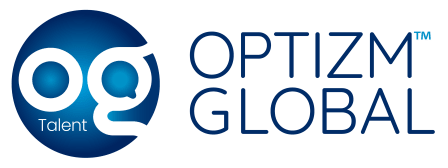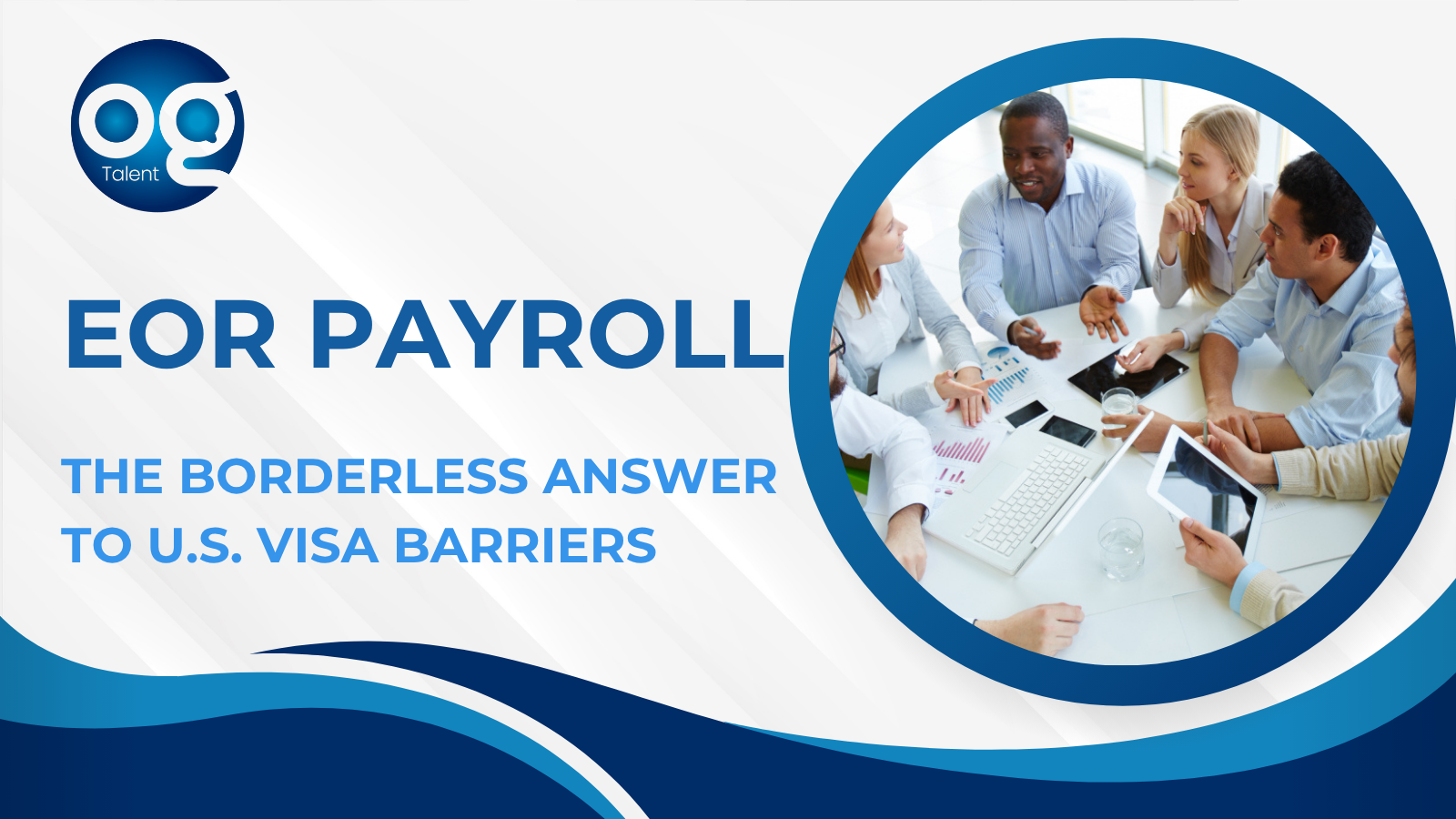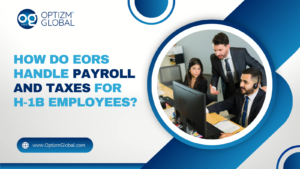For growth-stage firms and startups, talent matters. But getting U.S. work visas (such as an H‑1B visa) is getting more costly, more uncertain, and labor-intensive. The EOR global payroll model comes up as a clever, borderless solution that allows businesses to pay and hire talent where they are, instead of moving them and going through cumbersome U.S. visa sponsorships.
Why Visa Sponsorship Is Getting Risky
Recent H-1B regime changes H-1B regime changes demonstrate the pressure. From September 21, 2025, U.S. employers will have to pay a one-time US$100,000 fee for most new H-1B petitions for foreign workers outside of the U.S.
Some estimates suggest that the fee could potentially cost the U.S. economy thousands of skilled jobs per month.
For startups, which have lean budgets and aggressive timelines, sponsorship is a huge cost, liability, and holdup. By waiting months or shelling out enormous fees just to onboard someone onshore, your growth engine gets stalled.
The EOR Payroll Advantage: Hire Global, Comply Local
An EOR is the legal employer of record in a foreign country and manages payroll, benefits, taxes, and statutory compliance for talent employed there — while you retain control over the work, culture, and performance. This implies:
- You can bring an employee on board in country X rapidly (in days/weeks vs. months).
- You do not need to establish a local entity in each country.
- You avoid many challenges of U.S. visa sponsorship (immigration risk, relocation expense, and delay).
- You pay them in their home currency, under their home country’s laws, in line with local market value.
Since many jobs no longer need to be U.S.-based, the EOR + global payroll model is an agile, cost-effective option.

An Innovative Borderless Hiring Approach
Instead of conceptualizing “taking talent to the U.S.,” conceptualize “taking opportunity to talent.” Here are three strategic ways startups can leverage EOR payroll:
1. Develop “anywhere” mentality.
Your top product engineer could be in Lisbon, Lagos, or Bangalore. Recruit them locally through an EOR, compensate them competitively in their locale, and embed them in your remote-first process. The U.S. sponsorship route is now optional, not obligatory.
2. Establish a global payroll website.
Rather than process payroll country by country in spreadsheets, spend money on a multi-currency, tax regime, and statutory filing-supported platform or partner. You can turn heads up or down in a country without constructing a legal entity or waiting for a visa to come through.
3. Apply relocation judiciously.
Reserve U.S. relocation or visa sponsorship for the exceptional positions that genuinely need on-site presence (i.e., data-center access, security, critical client-facing staff). For all other positions, hire remotely through EOR. This hybrid strategy enables you to maximize cost and speed while still having a U.S. presence where you need it.
Payroll & Compliance Risks to Manage
It pays to go global through EOR but only if you handle some critical risks:
Classification risk: If you provide someone with a local contractor treatment when they’re essentially a member of your team, you might create employment-law problems or taxation obligations.
Permanent establishment (PE) risk: If an employee working remotely in country Y signs contracts, invoices in your name, or derives revenue, you might inadvertently establish a tax/home-entity burden in that country.
Data compliance: Transferring employee data across borders must respect local privacy law, which may differ from your home jurisdiction.
Pay equity & fairness: Even when hiring locally, global teams expect transparency. You’ll want to maintain internal equity by linking salary bands to role value, not just geography.
Payroll reliability: Your partner should ensure on-time, accurate pay in the right currency. Research indicates EOR models gain employee trust by providing that reliability.
Why This Strategy Makes Sense Post-Visa Reform
The $100K fee increase (and impending uncertainty regarding H-1B sponsorship) shifts the calculation. The cost of moving someone to the U.S. just increased exponentially; in most cases, the EOR pathway will cost a fraction of that.
Time is of the essence: If you discover a rock-star engineer overseas, waiting for a visa approval process could take you months and enable competitors to poach them instead.
Talent retention: A lot of high-skill professionals prefer to remain in their home country; providing them with a remote job with local compliance hired status through an EOR can increase loyalty and minimize churn.
Implementation Checklist for Startups
Audit roles: Identify which roles truly require on-site presence versus those that can be remote.
Select an EOR partner: Pick one that encompasses the countries where you’re hiring and provides payroll, benefits, and compliance in the local area.
Establish global pay bands: Tell the worth of the role and then factor in local cost-of-living and rates in the market for fair pay.
Build remote-first workflows: Make sure the experience, culture, tech stack, and integration of the team is as seamless for global hires as local hires.
Establish contract governance: Ensure contracts clearly state that the jurisdiction, tax status, intellectual-property assignment, and reporting line follow local laws.
Be mindful of immigration trends: Keep track of immigration changes in the U.S. and other countries. Use relocation as needed but strategically; EOR for remote hire.
Final Thought
The new frontier is “lead from anywhere, hire everywhere.” With the EOR + global payroll model, you can pay right without crossing borders, bypass visa backlogs, and remain compliant in a world where speed, access to talent, and agility are paramount.
When your next “hiring imperative” strikes, you should ask yourself: Do I need to relocate this talent or can I simply compensate them where they are already located, safely, compliantly, and competitively?






